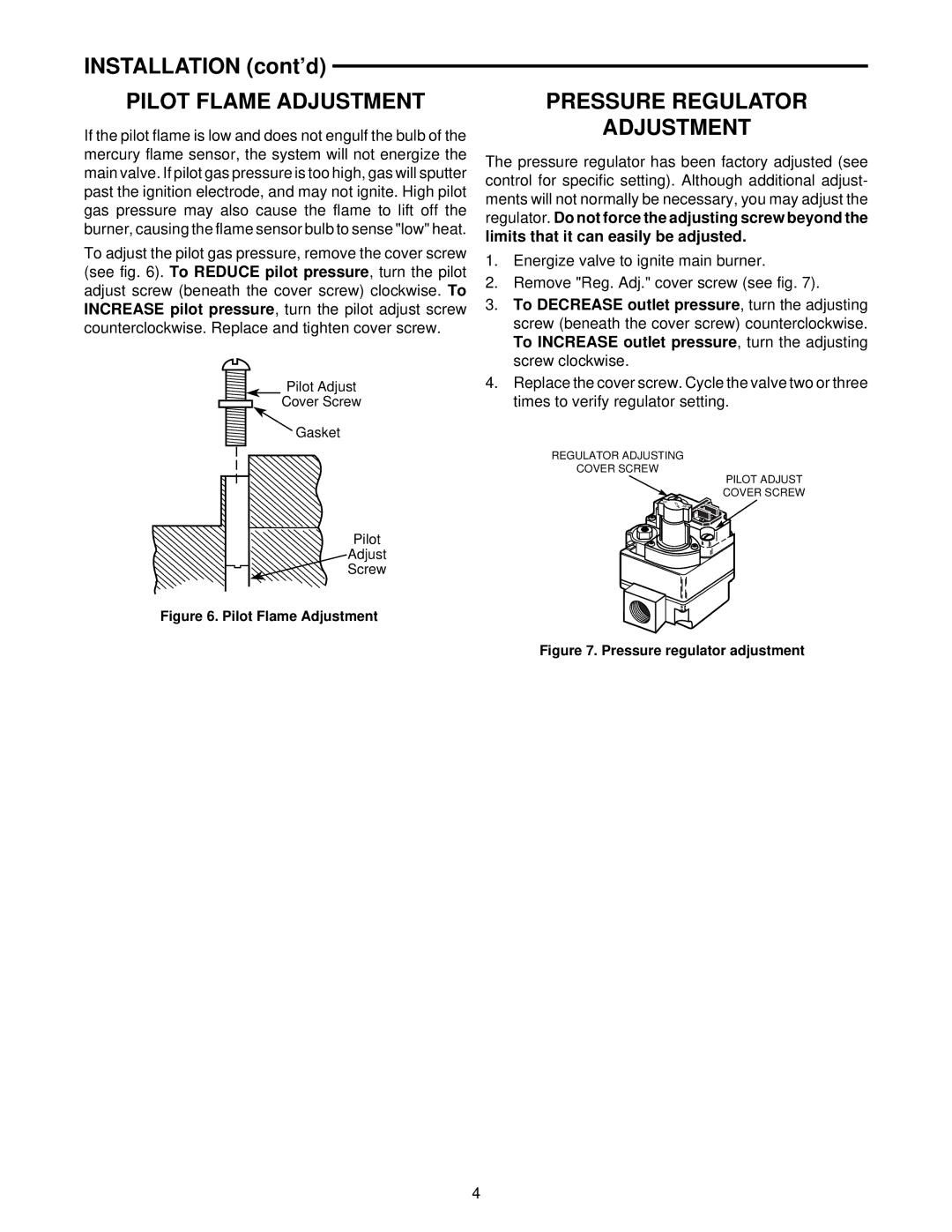
INSTALLATION (cont’d)
PILOT FLAME ADJUSTMENT
If the pilot flame is low and does not engulf the bulb of the mercury flame sensor, the system will not energize the main valve. If pilot gas pressure is too high, gas will sputter past the ignition electrode, and may not ignite. High pilot gas pressure may also cause the flame to lift off the burner, causing the flame sensor bulb to sense "low" heat.
To adjust the pilot gas pressure, remove the cover screw (see fig. 6). To REDUCE pilot pressure, turn the pilot adjust screw (beneath the cover screw) clockwise. To INCREASE pilot pressure, turn the pilot adjust screw counterclockwise. Replace and tighten cover screw.
Pilot Adjust
Cover Screw
Gasket
Pilot
Adjust
Screw
Figure 6. Pilot Flame Adjustment
PRESSURE REGULATOR
ADJUSTMENT
The pressure regulator has been factory adjusted (see control for specific setting). Although additional adjust- ments will not normally be necessary, you may adjust the regulator. Do not force the adjusting screw beyond the limits that it can easily be adjusted.
1.Energize valve to ignite main burner.
2.Remove "Reg. Adj." cover screw (see fig. 7).
3.To DECREASE outlet pressure, turn the adjusting screw (beneath the cover screw) counterclockwise. To INCREASE outlet pressure, turn the adjusting screw clockwise.
4.Replace the cover screw. Cycle the valve two or three times to verify regulator setting.
REGULATOR ADJUSTING
COVER SCREW
PILOT ADJUST
COVER SCREW
ON ![]()
PILOT OFF
Figure 7. Pressure regulator adjustment
4
